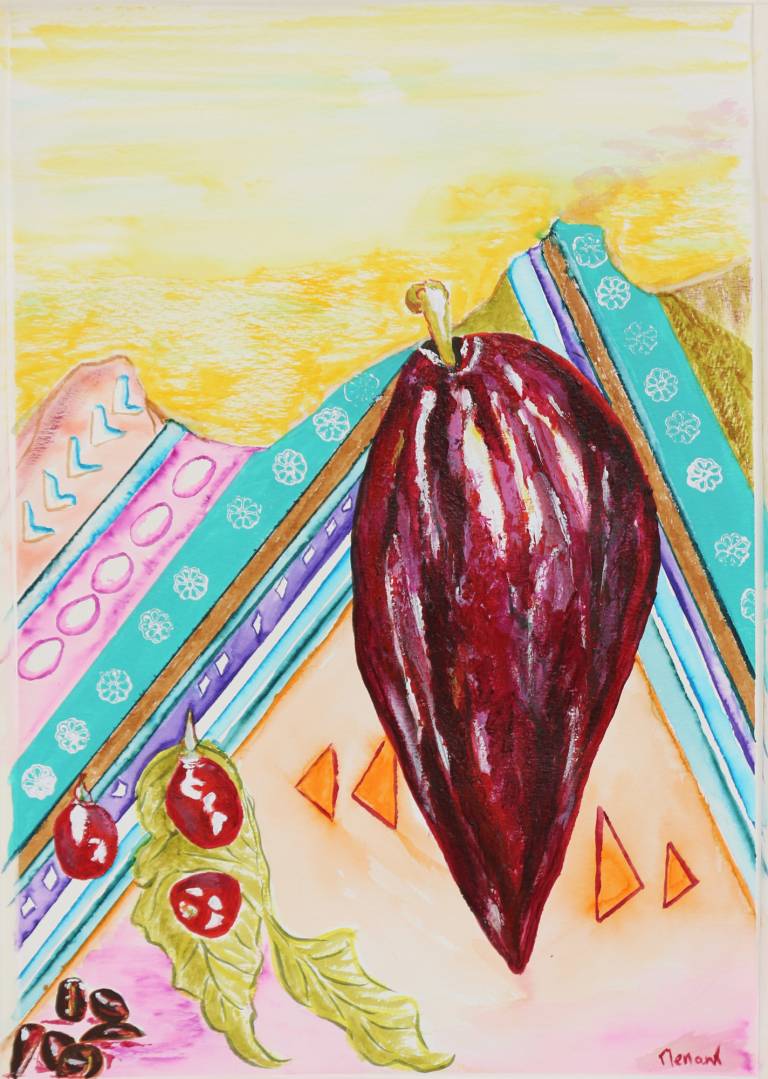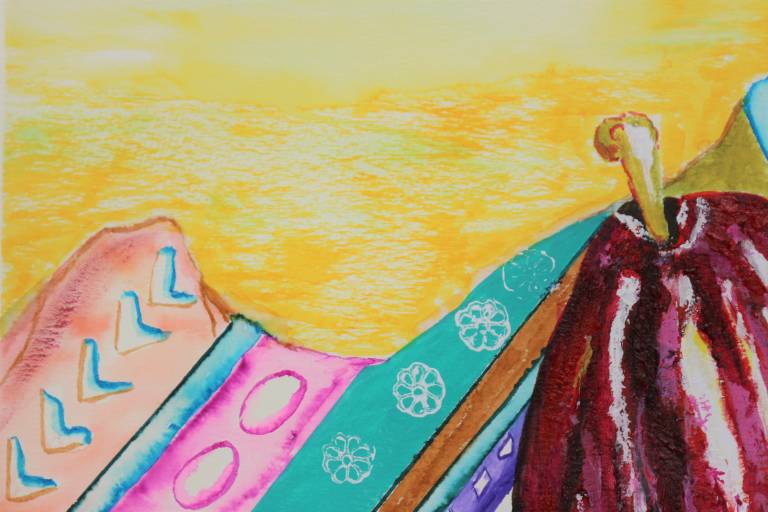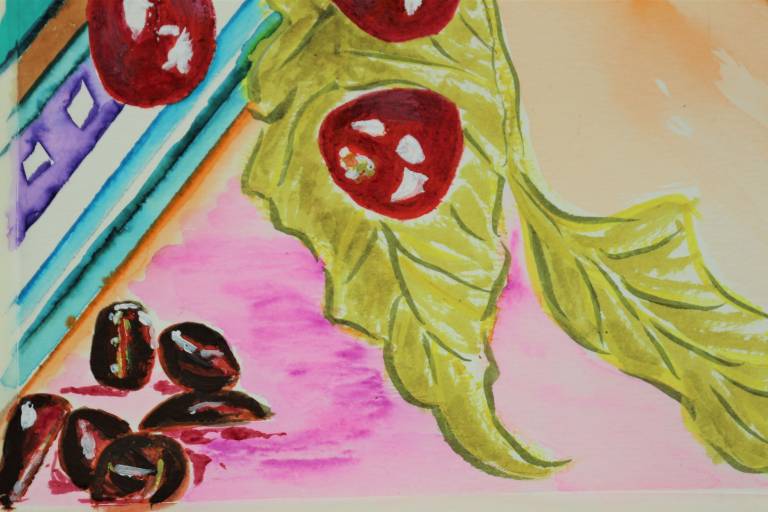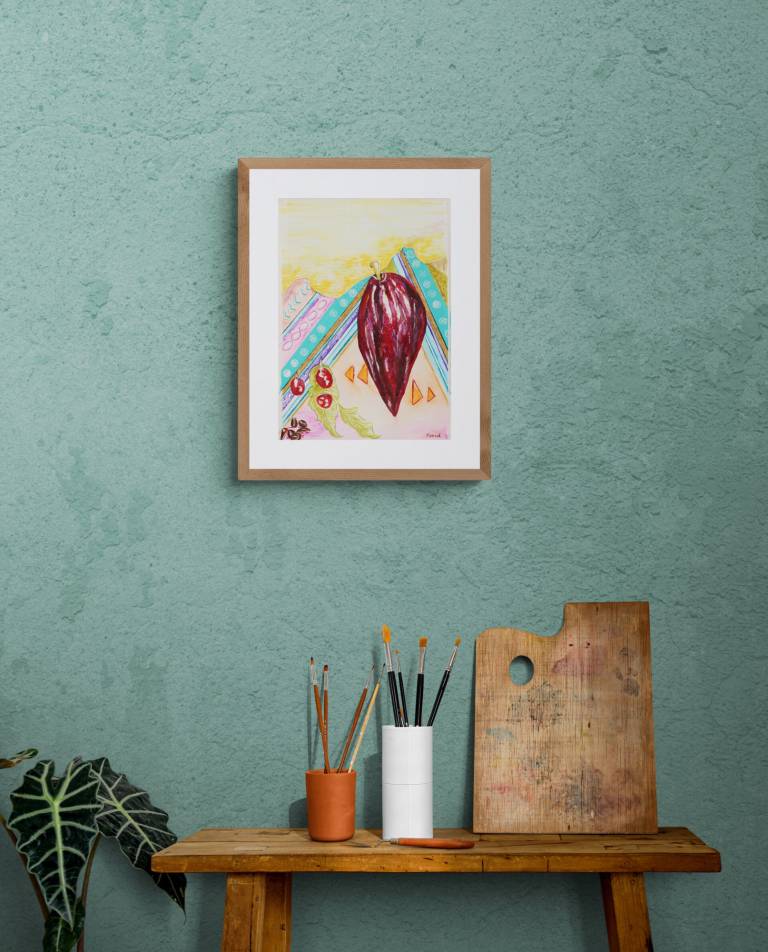CACAO
- Fruit Routes
- Acrylic and watercolour on paper
- 30 x 42 cm (11.8 x 16.5 in)
- Ref: 646625/317
£ 70.00
XOCOLATL in Nahuatl language. Glyphs (marks made by early humans) of cocoa beans have been found on Mayan temples dating back to 2,500 BC – I have depicted cacao alongside a Mayan hieroglyph in my painting.
Around 3,000 years ago, the beans inside the pod were used as currency by the Mayans and circulated across Central and South America. Chocolate was enjoyed as a drink with every meal by Mayans: it was thick and frothy and often combined with chilli peppers, honey or water.
The Aztecs later believed chocolate was given to them by the gods. It became a religious beverage for priests and kings.
Indigenous cultures of Central America grew cacao and chillies extensively, and they became key products to use for exchange in trade.
Cocoa arrived in Europe by the late 1500s and soon the huge demand for chocolate drinks meant that enslaved people were put to work on cocoa plantations to meet the insatiable appetite for the delicacy.
Eventually, Henri Nestlé brought chocolate to the masses by adding dried milk powder to create milk chocolate in the late 19th century.
Unfortunately, modern-day chocolate production comes at a heavy price. Many cocoa farmers earn less than one US dollar a day. Some use low-wage workers or children to stay competitive as the West continues to demand luxurious chocolates.
The World Economic Forum calculated the share each stakeholder receives from one tonne of solid cocoa: retailers receive the largest share at 44% and manufacturers have 35% while the farmers receive just 6.6%.
This work comes framed.



